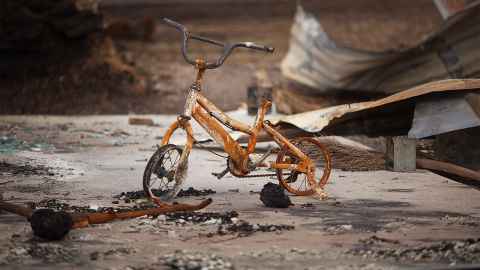Lessons from the Australian bushfires
4 February 2020
Opinion: NZ forefronts disaster risk reduction education within schools but recent events highlight it's not enough. We must not be complacent, writes Carol Mutch.

Over the last week, I have been helping teachers and principals in Australia prepare for their return to school. I was part of a wider group of academics and arts educators who hosted a seminar in Sydney available to the rest of the Australia by webinar. We provided advice from our research and practice to answer the question that most teachers had in their minds, “What do I do on the first day back?”
My advice was drawn from my research across five disaster settings – the 2009 Samoan tsunami, the 2010/2011 Canterbury earthquakes, the 2011 Japanese triple disaster, the 2015 Vanuatu cyclone and the 2015 Nepal earthquake.
I highlighted that schools take on a range of roles they might not be prepared for – as relief hubs or community shelters; as places of safety and security for traumatised students, their families and community members. Principals become crisis managers, dealing with repairs, relocations or rebuilding alongside their roles as educational leaders. They often put the needs of their staff and students before their own – risking their physical and mental health. Teachers, who often are disaster victims themselves, turn up to school day after day, doing their best to balance teaching the curriculum with helping students process the events they have experienced. While they are not trained to identify and help children cope with trauma, they soldier on and do their best.
Even though I am back in New Zealand, I am still receiving questions from teachers in bushfire-affected regions: “What do I do when some children want to talk about the bushfires and the others don’t?” At least, I could provide some suggestions.
My main work is in teacher education, yet apart from running some workshops after the March mosque attacks for our pre-service teachers, they receive no other information about their role in disaster preparedness, response and recovery. What the Canterbury earthquakes and the Australian bushfires have highlighted is that these events are far beyond what systems are prepared for. In Canterbury, it was eight years before the mental health needs of children and young people were fully recognised and the Mana Ake programme put in place. In Australia, the scale is beyond what they have dealt with before – the trauma will be widespread and ongoing – and schools will be left picking up the pieces as best they can.
New Zealand is at the forefront of disaster risk reduction education, yet a once-over-lightly focus on 'Shakeout' or 'What’s the plan, Stan?' is not enough.
If I could turn my research into a wish-list of recommendations, I would suggest that the best-prepared schools would have thought through, planned and trained for all stages of the disaster cycle (mitigation, preparedness, response and recovery).
Schools would assess their facilities and the local community for hazards and risks – and for post-disaster uses. The local community would be informed and engaged in relevant risk identification and planning for possible events. Principals would receive training in crisis management. Teachers would have a basic understanding of their roles from their pre-service teacher education and would receive regular updating in professional development courses. Schools would have more counsellors and social workers to support building resilience and providing after-event trauma screening and support. Topic choices across the social sciences, science and health would make learning about hazards and risks relevant to the local area, build disaster understanding and teach coping strategies.
We are in one of the most disaster-prone countries in the world and the likelihood of severe weather events is increasing with climate change. We cannot afford to be complacent. Yet, with a little bit of foresight and co-ordinated planning we can be better prepared in a way that might mitigate the impact of the event and shorten recovery time.
The start of the school year and the recency of disaster events provides the impetus to get started, now.
Professor Carol Mutch is from the Faculty of Education and Social Work. Her research specialises in the role of schools in disaster response and recovery.
This article reflects the opinion of the author and not necessarily the views of the University of Auckland.
Used with permission from Newsroom Lessons from the Australian bushfires 3 February 2020.
Media queries
Alison Sims | Research Communications Editor
DDI 09 923 4953
Mob 021 249 0089
Email alison.sims@auckland.ac.nz